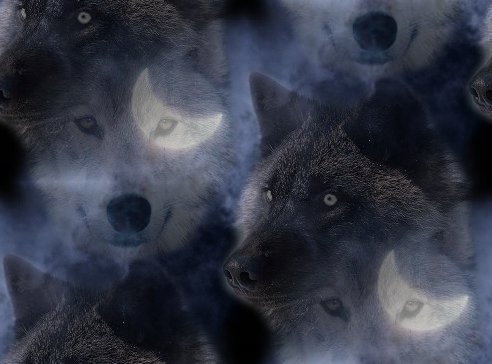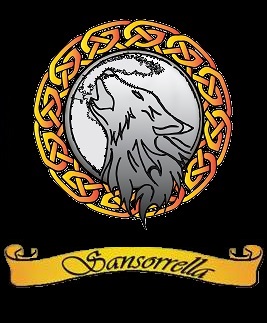
Coefficient of Inbreeding (COI) Calculation


|
Coefficient of Inbreeding (COI) Calculation by Celeste Pongrácz Revised March, 2008 COI is the calculation of the level of inbreeding in a dog or litter. High COI percentages increase the probability that genetic defects will be carried from common ancestors on both sides of the pedigree and will match up to cause the actual genetic disease or defect in the animal. Many other problems of a high COI also affect dogs, such as Autoimmune disease and inbreeding depression symptoms, which result in reproductive and longevity issues. A COI of 12.5% is equivalent to a half brother - half sister mating or a grandparent - grandchild mating. A COI of 25% is equivalent to a parent-child or brother - sister mating. Ideally, the COI of a litter should not exceed 6.25% or the average COI of the two parents. It is highly recommended to avoid COI percentages in excess of 12.5% and a COI in excess of 20% should be totally avoided. Some genetically inherited diseases and faults in herding breeds are: Hip and elbow dysplasia Patella luxation Epilepsy Eye disease such as: cataracts, Collie Eye Anomaly (CEA) and Progressive Retinal Atrophy (PRA) Cancer Allergies and skin problems Retained testicles Autoimmune diseases Bad bites and missing teeth Unacceptable colours Temperament problems such as shyness and aggressiveness Inbreeding depression symptoms are seen as the loss of viability or function resulting from excess inbreeding. Sometimes these symptoms are very subtle and gradual and are often blamed on diet, pollution and other environmental factors. While these factors may also contribute, it is the dogs genes that make it more susceptible. The most frequently seen inbreeding depression signs are: Chronic poor health/poor keepers Higher incidence of disease in a line (or breed) of one or more diseases than is seen in the breed or canines as a whole Higher incidence of immune system diseases Unusually small litter size Difficulty in getting and keeping bitches pregnant Bitches that abandon a litter or are poor mothers Bitches that kill or damage puppies intentionally or by lack of care Studs that are indifferent to a bitch in standing heat Studs that cannot breed without help Low sperm count Earlier average age of death in a line or in the general breed population
All of these factors make it incredibly important that you do the COI calculation on any planned litter. Keeping the breed healthy is easier than cleaning it up after the fact. Once the gene pool is closed and the genetic base remains the same, the genetic situation can either remain stable or deteriorate, it cannot improve without new genetic material brought in via outcrossing to another breed or the use of non-registered stock. Inbreeding, linebreeding and the usage of popular sires are methods of the past ages of dog breeding, their time is over. Nature goes to great lengths to avoid inbreeding, so should today’s breeder. COI calculation can give the breeder an indication of how inbred a dog or litter will be. Knowing this percentage will enable you to make the best choices towards reducing inbreeding in your dogs. Today the emphasis should be put on health, temperament and working ability if purebred dogs are going to survive into the next hundred years. Active concern for health should be your number one breeding goal, because without health, you have no dog. Unfortunately you cannot simply download a free program for calculating a COI off of the internet and add into it the dogs on the pedigrees you hold in your hands. You cannot even pay for a program and add in this information and expect to get the right percentages. You need to have all the dogs behind the pair you plan to mate for 10 generations back in order to get the correct percentage as this is how far back the generations need to be taken into account. You may not realize this, but 1 dog with 10 generations behind it has 2046 dogs in its 10 generation pedigree! If you want to calculate the COI of a pairing, you need to add in 2046 dogs from the one parent and 2046 dogs from the other, that’s 4092 dogs. 10 generations may seem like a lot of generations and a lot of dogs, but it is not and it is figured on a sliding scale with the generations affect reducing by the proper proportions as they recede. I have a professional database program that I purchased in 2004 and have put hundreds of hours of work into it. I presently have over 4400 Mudi’s that I have entered into my database. I continue to work on it and add in more dogs as I find them, some new ones and some older ones. As this is a continual process, COI’s will change from time to time, they do not get lower however, only higher, but the changes are usually small. I provide free COI calculations for the Mudi breed to anyone, no fee is ever charged. Please email me with the names of the dogs that you would like to breed together at: peter.celeste.pongracz@gmail.com "Inbreeding was once a valuable tool in shaping today's breeds. As these have now reached a high degree of homogeneity, it has lost its importance and turned into a fatal and disastrous habit." Hellmuth Wachtel, Ph.D. "The breeding of purebred dogs is akin to (breeding laboratory mice)...(most breeds) are becoming progressively more inbred. My observation is that most are on the road to extinction, but most breeders do not even realize they are part of an experiment." John B. Armstrong, Ph.D. "However, we ignore the biological impacts of the practice (inbreeding) at our peril - or more accurately, the peril for our dogs." C.A. Sharp I would like to extend my sincerest thanks to C.A. Sharp for all of her efforts to help us breed healthier dogs and to all of the researchers that work towards providing us the knowledge and tools to accomplish this.
|

| The COI of all Anglo Wulfdog litters is tested at
the planning stage using a database containing more than the necessary
10 generations. We can therefore ensure that the COI is never
above 6.25% . For that reason we are prepared to outcross to
suitable studs at any time in the future and to bring in unrelated
females when needed to maintain a healthy genetic diversity in the
breed. |


![]() Sansorrella 2019 All rights reserved
Sansorrella 2019 All rights reserved